The
Perth tramway network served
Perth from the end of the nineteenth century until 1958.
According to one source, the central city terminus of the short lived horse tramway was the General
Post Office, which was then located within the Treasury Building, at the corner of St Georges Terrace and Barrack Street. The outlying terminus was said by the same source to be in East
Perth. However, it now seems that, in fact, there was never a horse tram provided for the carriage of passengers in
Perth.
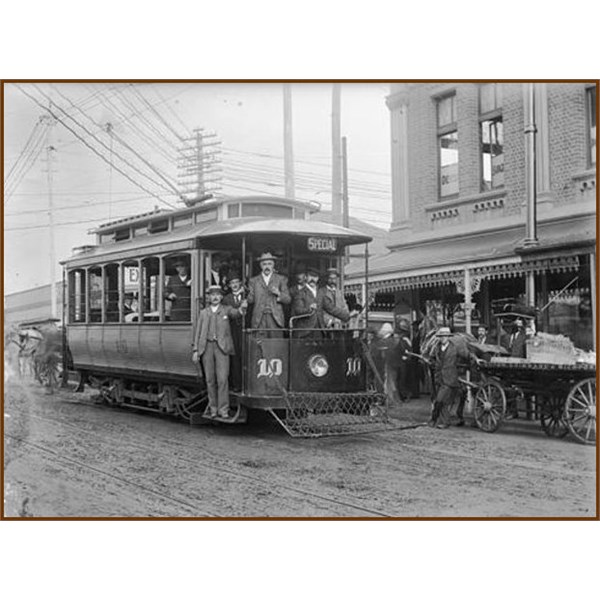
Opening of the William and Wellington Streets line, 1902
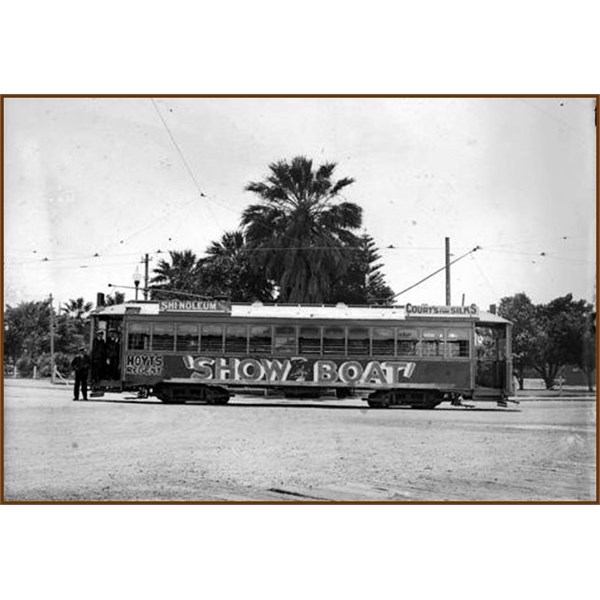
Perth tram with advertisement for Show Boat, showing at the Hoyts Regent, 1929
Rather, there was – it is believed – a horse tramway which ran from quarries just north of the city to the construction site of Government House situated in St Georges Terrace. For how long the horse tramway survived is not known, nor its exact route, as information has not yet been found, although research continues. It is known, however, that a horse omnibus system did exist
Perth's first electric tram network was inaugurated in 1899. It linked
Perth's central business district with many of its inner suburbs, especially on the north side of the Swan River, but was wound down from 1949, and closed in 1958. It had a maximum street mileage of over 30
miles in the 1930s.
The network operated under 35 route numbers, on various lines extending from Osborne Park in the north to Como and
Welshpool in the south, and from Claremont in the west to
Welshpool in the east.
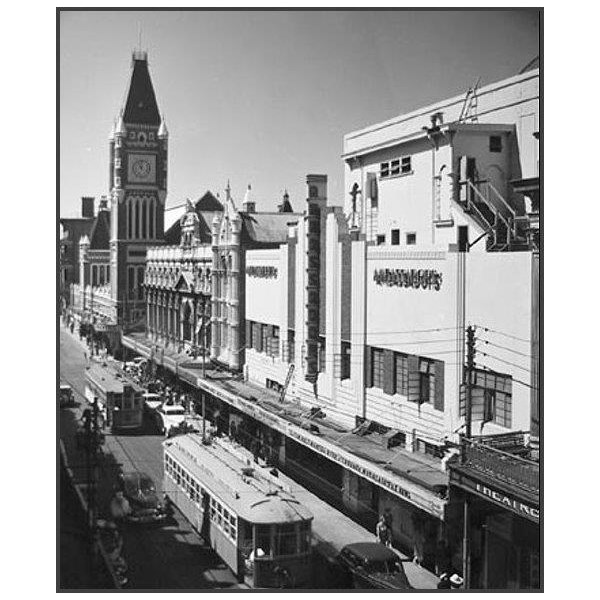
Electric trams on Hay Street in 1949
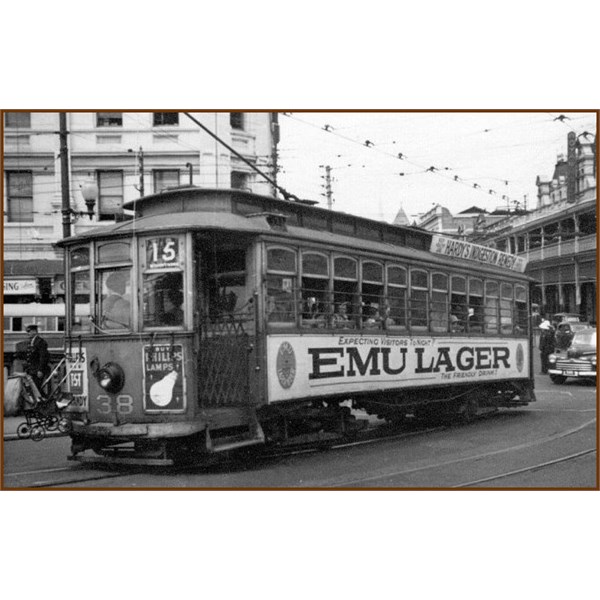
Perth tram 38 -1950
Some of the trams from the first
Perth network are now preserved by the
Perth Electric Tramway Society, at its
heritage tramway in Whiteman Park, in the outer
Perth suburb of Caversham.
The
Fremantle Municipal Tramways began operations in 1905. The network expanded into North
Fremantle in 1908, and into Melville in 1915. The North
Fremantle line closed in 1938 and was replaced by diesel buses. The rest of the network reached its peak usage during World War II.
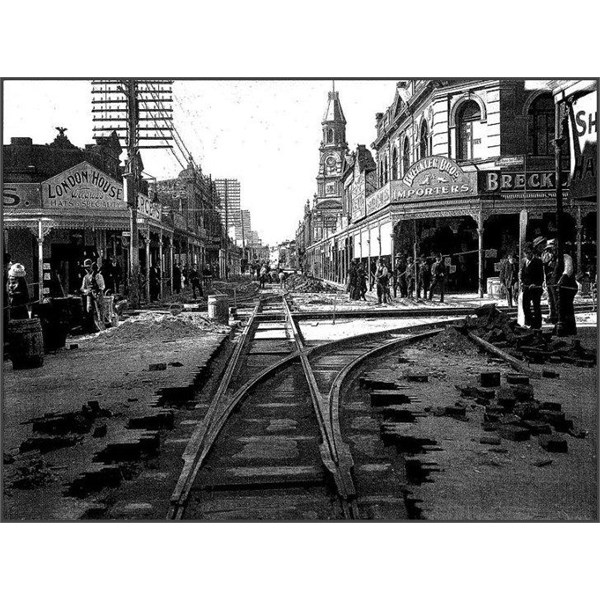
tramlines being laid in Fremantle, Western Australia, in 1905
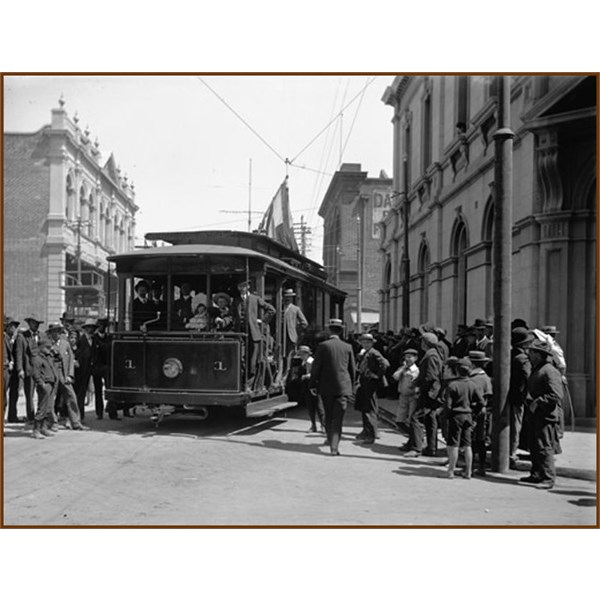
FMT opening day, 30 October 1905
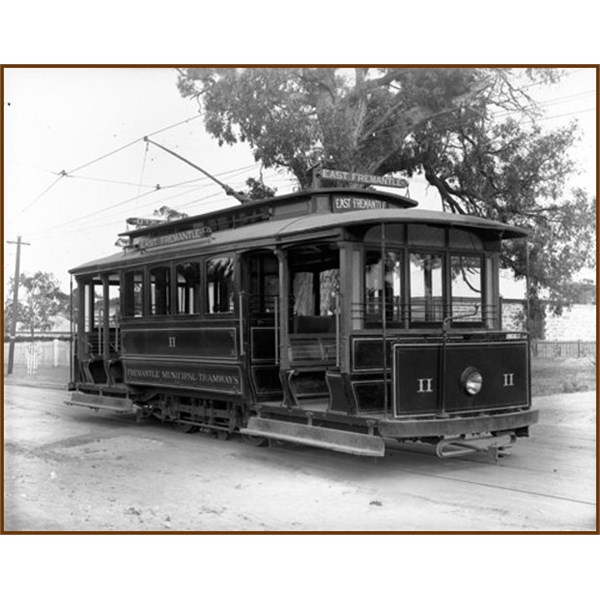
FMT tram no 11, 1906
After World War II, the system operated quite profitably for the Council. However, the decision of the Western Australian State Government to nationalise the southwest electricity systems from private and council ownership to the newly formed State Electricity Commission in the early 1950s meant that the price of power to the trams increased markedly, to the extent that supply was extremely costly to the Council.
As a result, and without any fanfare at all, the whole system was closed after the last tram ran into the Carbarn in Queen Victoria Street on a Sunday night in November 1952.
Some of
Fremantle's former trams are now preserved by the
Perth Electric Tramway Society, at its
heritage tramway in Whiteman Park, in the outer
Perth suburb of Caversham
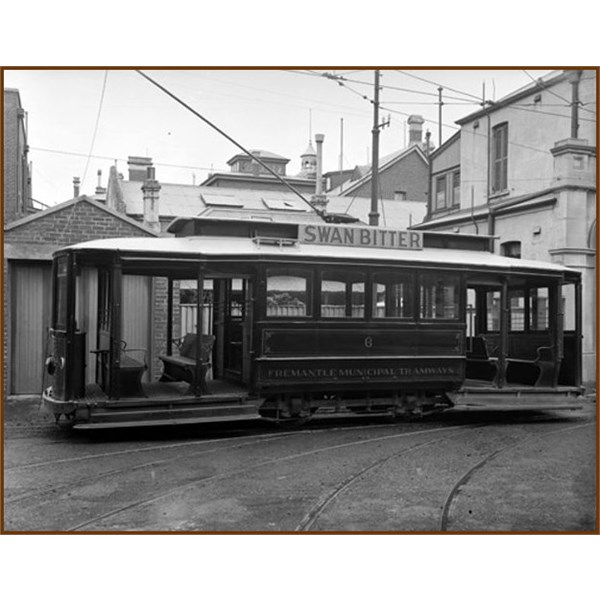
FMT tram no 6, c 1930
A total of 36 trams entered service on the
Fremantle tram network between 1905 and 1939. Most of them remained in service until 1949 or later. Unlike their
Perth counterparts, the various classes of
Fremantle tram were not officially allocated any class designator code. Each individual
Fremantle tram was officially identified only by its unique number.
Most
Fremantle trams fell into two main classes, with a small transitional group in between.
The first main
Fremantle tram class, made up of tramcars 1 to 19, 24 and 25, was of single truck, drop end, open California combination tram cars. They entered service between 1905 and 1914.
The second main class of
Fremantle tram was made up of tramcars 26 to 36. They were bogie saloon cars, and entered service between 1921 and 1939.
The dominant colour in the livery of every
Fremantle tram was a shade of maroon. The single truck tramcars were also lined with pinstripes, and the bogie trams also painted a cream colour at window level. By Australian standards,
Fremantle trams were generally
well maintained, right up until the closure of the
Fremantle network.
The final new
Fremantle tramcar, number 36, was also the last new tramcar to be built for a Western Australian tram network.Together with
Fremantle tramcars 14, 28 and 29, it is now preserved by the
Perth Electric Tramway Society, at its
heritage tramway in Whiteman Park.
Some other locations in WA that operated Trams,
Broome was established as a pearling port in 1880. A horse-drawn tramway was constructed in 1898, for the transport of goods from the jetty at Mangrove Point to the town, and by 1904 a passenger car was in use. Originally built to the 2 ft gauge, the tramway's success led to its regauging in 1907 to 3 ft 6 in, and a passenger car to that gauge was then provided.
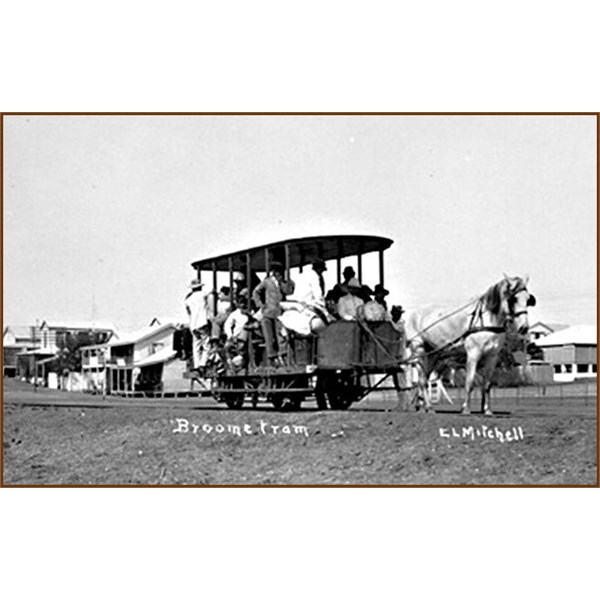
A horse drawn tram in Broome, 1904
Horses were replaced by steam in 1910, petrol and diesel engines being introduced later. The line was finally closed with the establishment of a new deepwater port some
miles away from
Broome in 1966, the passenger service having already ceased some years earlier.
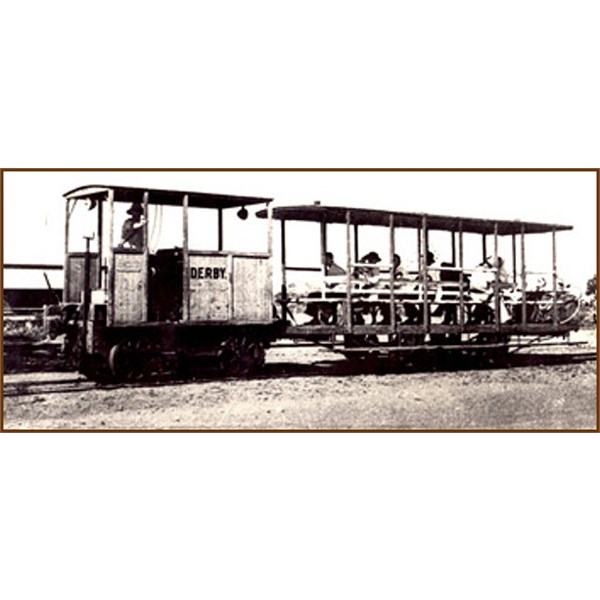
Passengers on the Derby tram after the retirement of the horses.
The
Derby tramway was established in 1886. It travelled about 1 mile from the jetty and over extensive mudflats before reaching the town, and continued for a slightly greater distance through the town itself, along the main street. Except on the L-shaped jetty, the line was straight for its whole length.
Unlike most of the coastal tramways,
Derby had a gauge of 3 feet 6 inches from the beginning. It was horse powered originally, internal combustion engines being used later - steam was not employed at any stage. The two lightweight passenger cars were eventually replaced by heavier wagons.
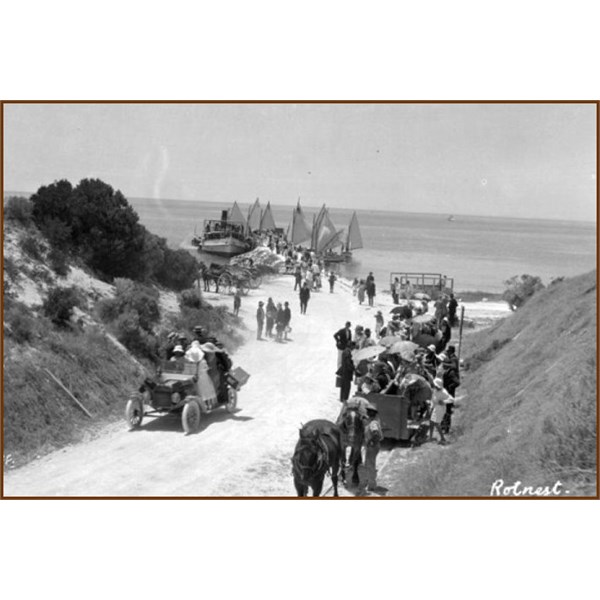
trams and car at Natural Jetty, Rottnest Island 1922
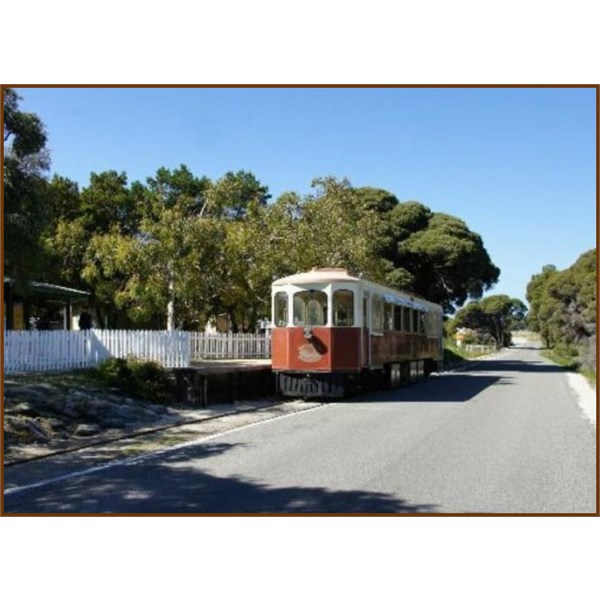
Rottnest Island Tram
By the way.... when I was in Germany 2013 I spent a week with a Facebook friend inthe City of Nurnberg, most people like model trains but Erwin likes Trams, he proudly showed me his set up especially the
Adelaide Tram, the Tram with the yellow front. I look forward to seeing his set again this coming July.
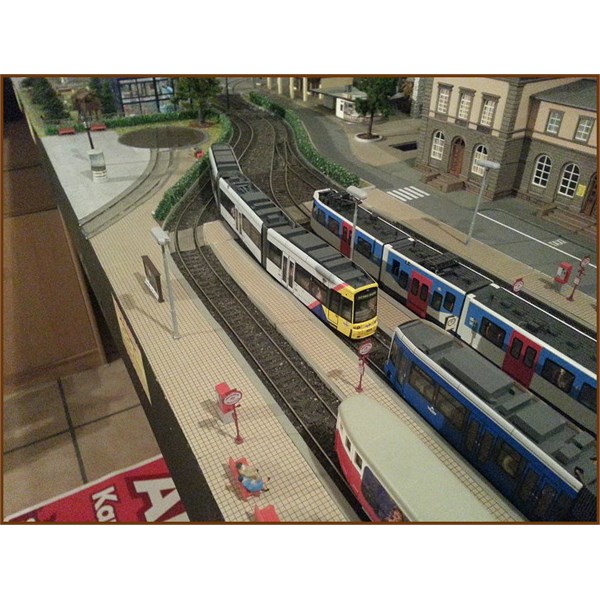
Adelaide Tram
A modern light rail line was announced for
Perth in 2012 for completion in 2018.
.